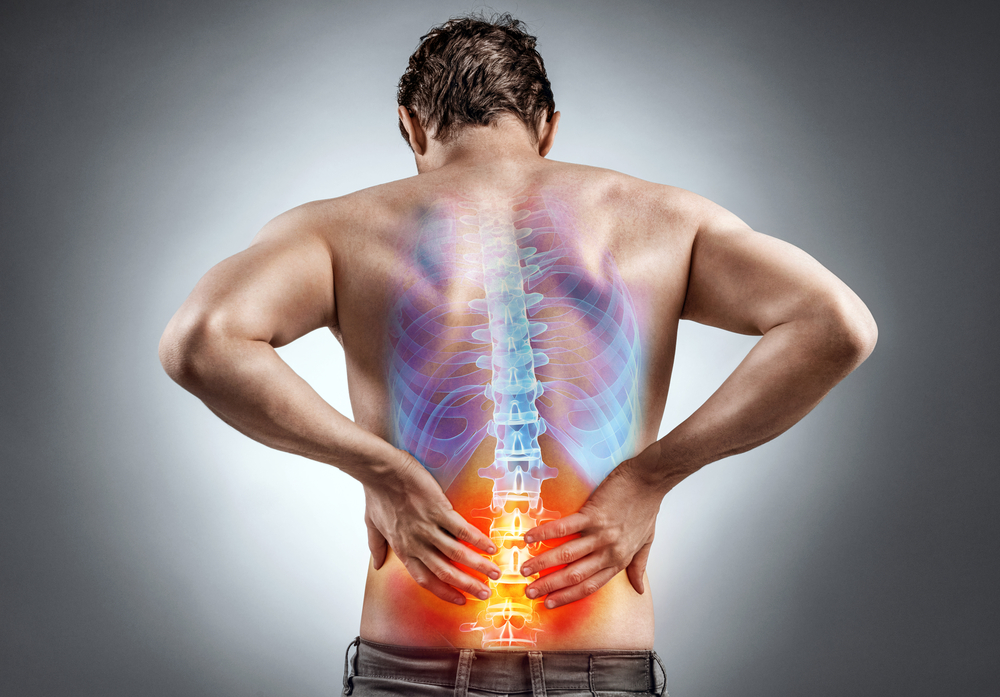
Lower Back Pain
Lumbago/lower back pain is an excruciatingly painful condition. You will be in excruciating pain and will have limited mobility for at least two days. When this pain spreads to your lower limbs doctors refer to it as lumbago with sciatica.
Overview
Lumbago is a stabbing back pain that usually affects the lower back (lumbar spine). It is typically caused by muscle tension as a result of a sudden jerking movement or an incorrect strain on the spine. Lumbago pain can range from mild to severe. Some patients have acute pain that goes away with time while others have chronic pain that is difficult to get rid of. It is frequently triggered by twisting or bending over. Studies state that 85% of people will experience lumbago at some point in their lives.
It's worth noting that it doesn't usually affect the elderly. It's more common in middle-aged people. Lumbago is typically diagnosed based on its distinctive symptoms. In most cases, an X-ray of the spine is also performed to detect possible degenerative spinal diseases.
Causes
Lumbago is commonly described as a dull aching pain in the lower back. However,
The pain can be severe with stabbing burning tingling or shooting sensations.
Muscle tension and stiffness are possible additional symptoms.
Symptoms may restrict your mobility and make it difficult to lean in certain directions.
The pain is localized in the lumbar region of the spine and is accompanied by back muscle tension and hardening.
Back movement is severely restricted due to pain and tension.
Often, the person is unable to straighten their back.
A slipped disc in the spine can irritate the nerve roots, causing pain to radiate down the leg along the sciatic nerve. Sciatica is the medical term for this condition.
Sensory problems in the leg can also be caused by a prolapsed disc.
Symptoms
Lower back pain is common after sitting for long periods with poor posture.
Lumbago can also be characterized by pain that worsens after a sneeze or cough.
Pain worsens after engaging in certain activities. This could include heavy lifting or pulling gym exercises or sports-related movements. This is especially common following movements that cause an abnormal or excessive bend in the lumbar spine.
Furthermore, certain conditions can aggravate or even cause lower back pain.
People who are pregnant or obese for example, are more likely to suffer from lumbago than others.
Sedentary people are more likely to experience back pain than those who move throughout the day.
Fever
Severe muscle spasms
Numbness or weakness in the lower limbs are also warning signs.
Ayurvedic View
Kati shoola -The condition in which kati means spine of lumbo sacral region and shoola means pain is present is lumbar spondylosis. Aggravaed vata dosha takes sthana (settles) in kati pradesha (lumbar spine) does dushti (vitiation) of asthi vaha srotas (bone and nearby bone supporting structures), which results in pain, restricted movement and difficulty with function of lumbar spine movements. Ayurveda way of approach is to bring dosha back to prakruta awastha (balance state), reduce the symptoms, nourish the dhatus (affected bones and supporting structures of lumbar ), rehabilitate the affected part by ayurvedic panchakarma treatment.
Ayurvedic Treatments
Churna pinda swedanam Patra pinda swedanam Pinda sweda Lepanam Kati vasti Virechanam Vasti Navara pinda swedanam
Naturopathy Treatments
Spinal bath Spinal spray Enema Manipulative therapy Steam bath Mud therapy Reflexology Acupuncture Hijama Clinical yoga Physiotherapy Electrotherapy Exercise therapy Chiropractice Dorn therapy
Lower Back Pain
Treatment for
DISCLAIMER: Listed treatment details are only for information purposes. Treatments and duration may vary depending on numerous factors. Treatments for your condition may not be limited to this list.






















